iLamps: Geometrically Aware and Self-Configuring Projectors
Appeared in SIGGRAPH 2003Ramesh Raskar, Jeroen van Baar, Paul Beardsley, Thomas Willwacher, Srinivas Rao, Cliff Forlines
Mitsubishi Electric Research Labs
My thoughts :
In the last five years, we have seen a flurry of projector-related
publications and some exciting prototypes at graphics, vision and HCI
conferences. Advances such as the use of rectangular LCD or DLP matrix
have allowed us to overcome the geometric non-linearity of CRTs. This
ability to achieve linear projection has been the key factor. Like many
other devices, the reduction in cost and size and increase in
performance of projectors have further added to the momentum. Linear
projection has enabled many ideas in graphics and vision that are based
on parametric approaches (e.g. pin-hole model) to be practically
applied to projector-based systems. By treating the projector as the
dual of a camera, traditional geometric and photometric techniques can
be elegantly adopted for projector display.
However, we believe that projectors are capable of much more. Our goal is to embed projectors as part of an infrastructure as they become mobile and networked. By exploiting elements (that will become) available in a self-contained projector such as the camera module, a tilt sensor and wireless connection, we demonstrate many other modes of operation, corresponding algorithms and potential applications.
Technical contribution include a 'Shape-adaptive' projection paradigm, a new image transfer equation for quadric transfers (e.g. for image registration on spherical or cylindrical screens) and a robust global constistency method using local computation.
Abstract
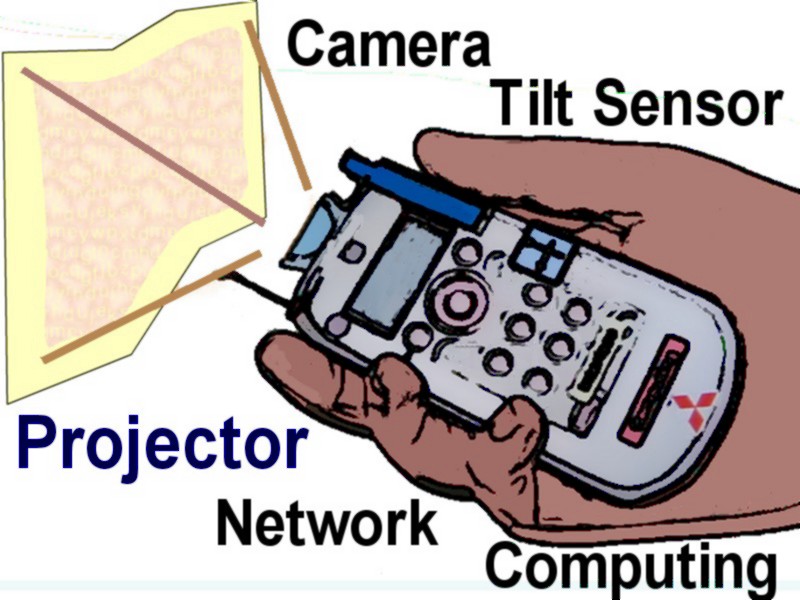 Projectors are
currently undergoing a transformation as they evolve
from static output devices to portable, environment-aware,
communicating
systems. An enhanced projector can determine and respond
to the geometry of the display surface, and can be used in
an ad-hoc cluster to create a self-configuring display. Information
display is such a prevailing part of everyday life that new and more
flexible ways to present data are likely to have significant impact.
This paper examines geometrical issues for enhanced projectors,
relating
to customized projection for different shapes of display surface,
object augmentation, and co-operation between multiple units.
Projectors are
currently undergoing a transformation as they evolve
from static output devices to portable, environment-aware,
communicating
systems. An enhanced projector can determine and respond
to the geometry of the display surface, and can be used in
an ad-hoc cluster to create a self-configuring display. Information
display is such a prevailing part of everyday life that new and more
flexible ways to present data are likely to have significant impact.
This paper examines geometrical issues for enhanced projectors,
relating
to customized projection for different shapes of display surface,
object augmentation, and co-operation between multiple units.
We introduce a new technique for adaptive projection on nonplanar surfaces using conformal texture mapping. We describe object augmentation with a hand-held projector, including interaction techniques. We describe the concept of a display created by an ad-hoc cluster of heterogeneous enhanced projectors, with a new global alignment scheme, and new parametric image transfer methods for quadric surfaces, to make a seamless projection. The work is illustrated by several prototypes and applications.
| Prototype of a Single Unit (with projector, camera, tilt sensor, computing, wireless transponder and interface) |
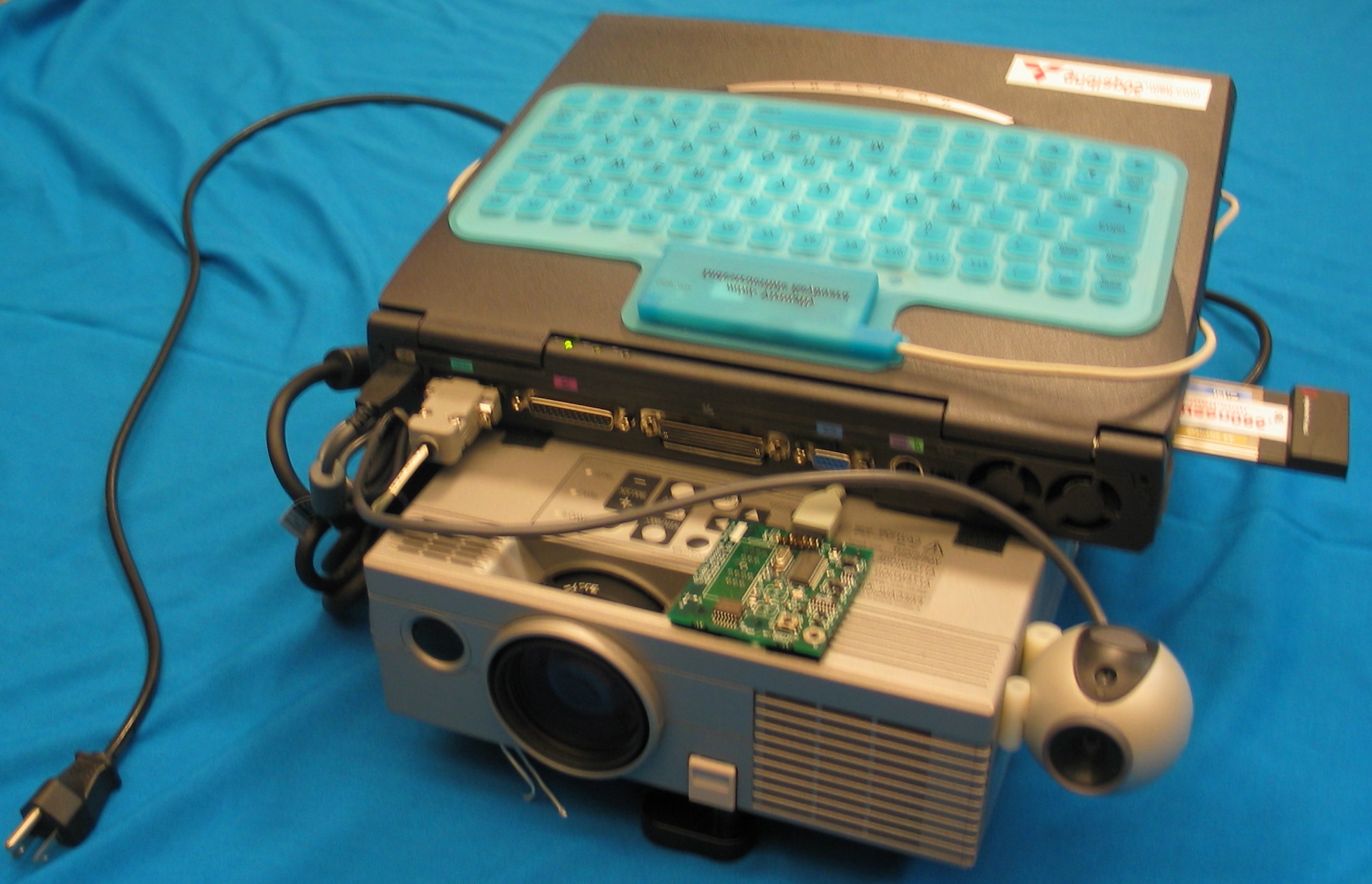 |
| Shape-adaptive Projection | |
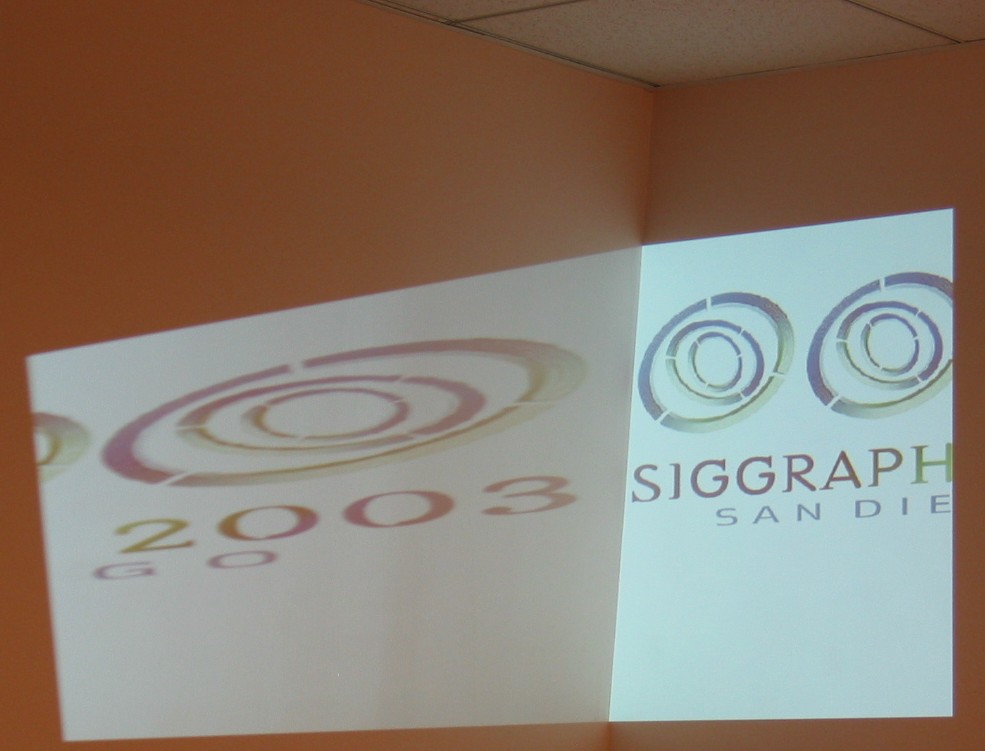 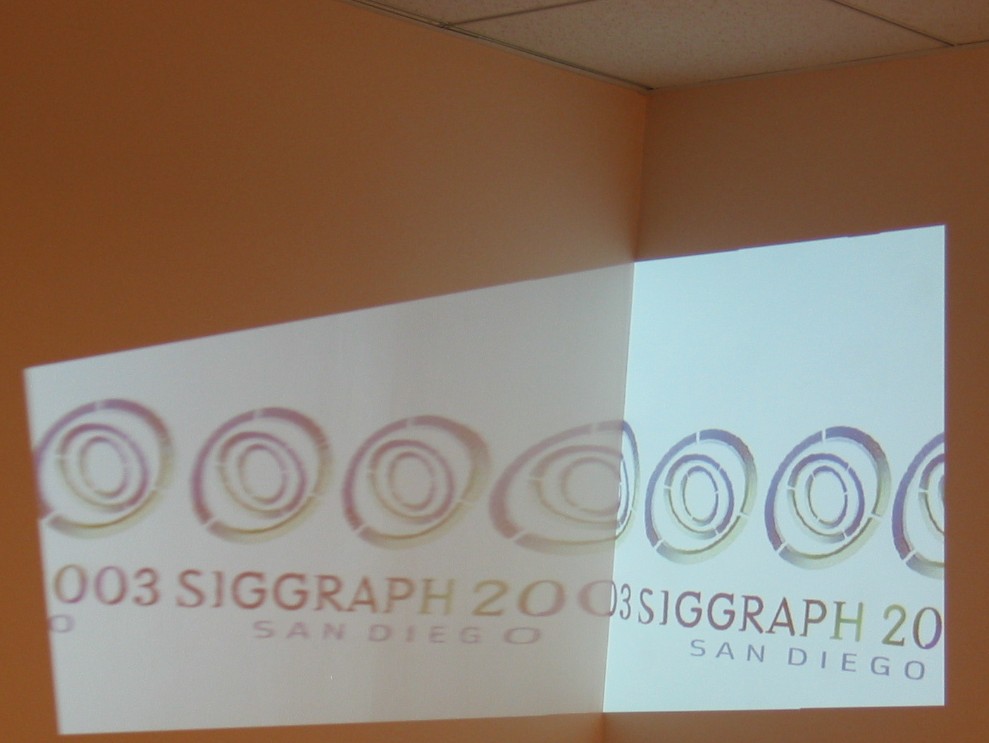 |
| Object-adaptive Display | ||
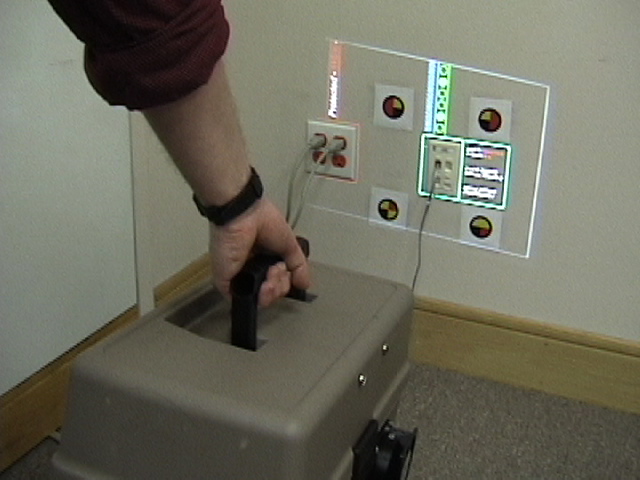 |
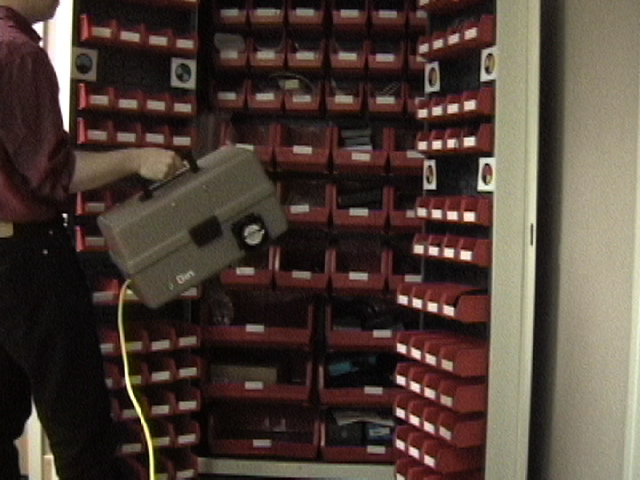 |
| Ad-hoc Cluster of Autonomous iLamps (Projectors Units) | |
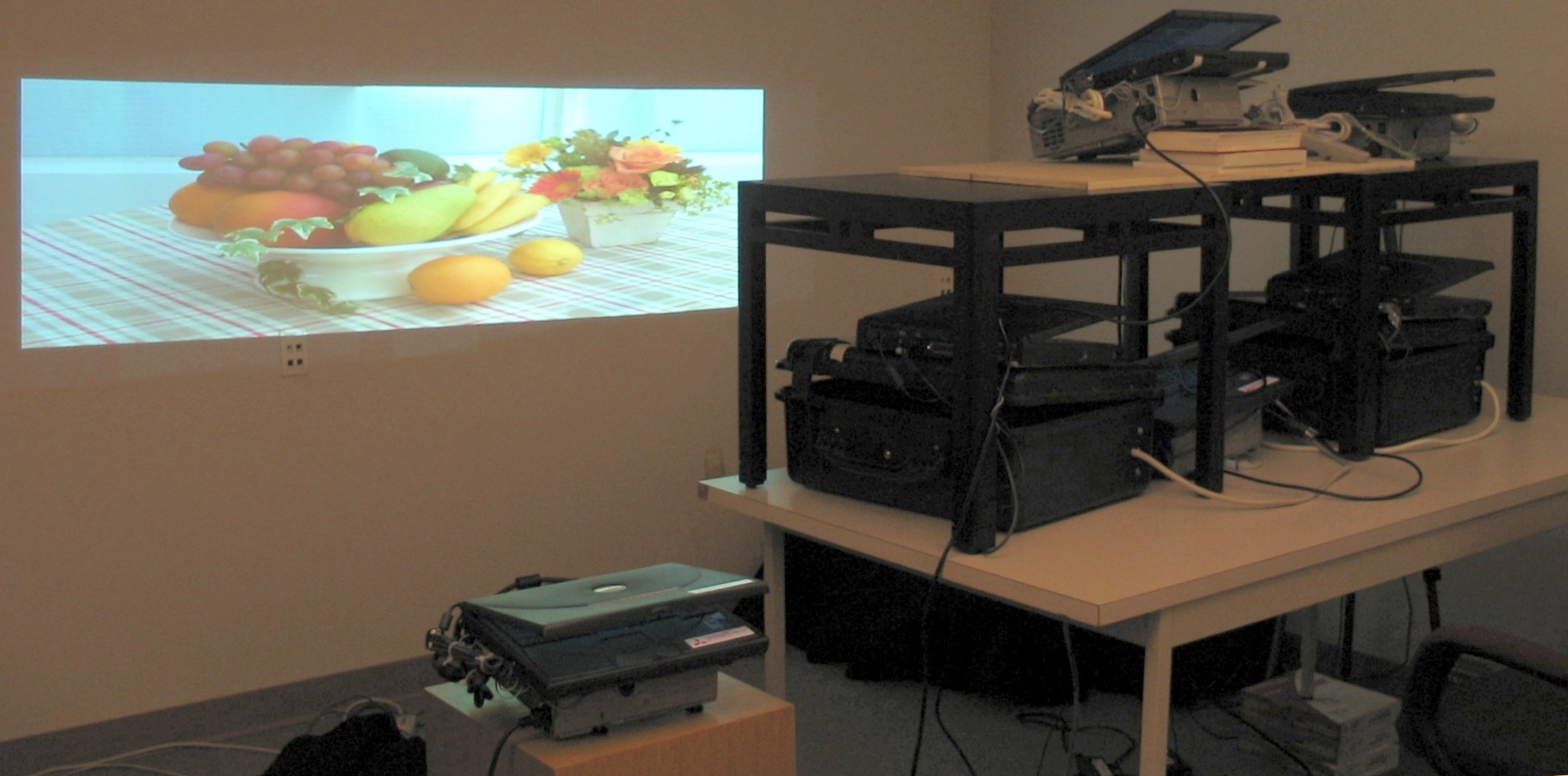 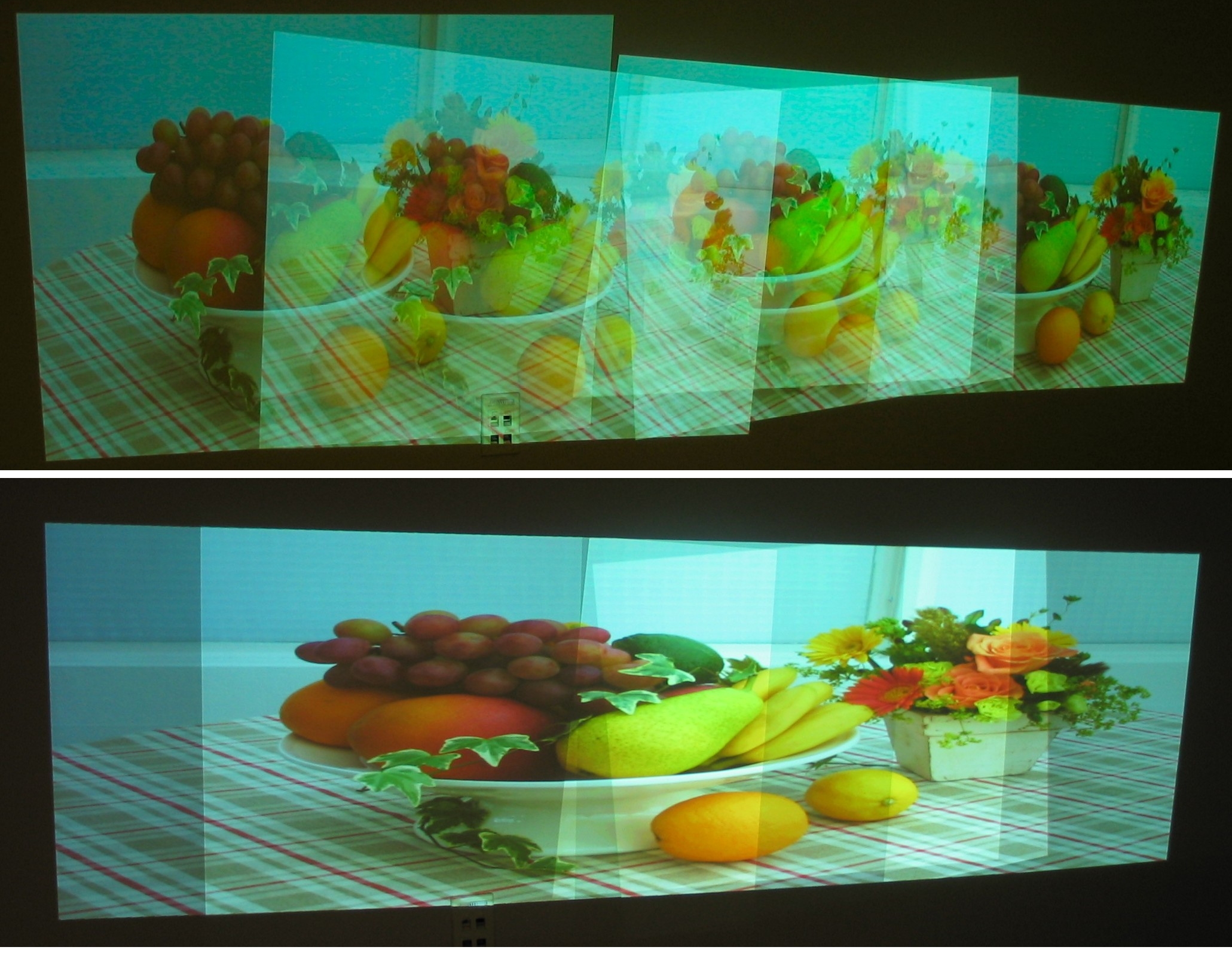 |
| Ad-hoc Cluster for Quadric Curved Screens | |
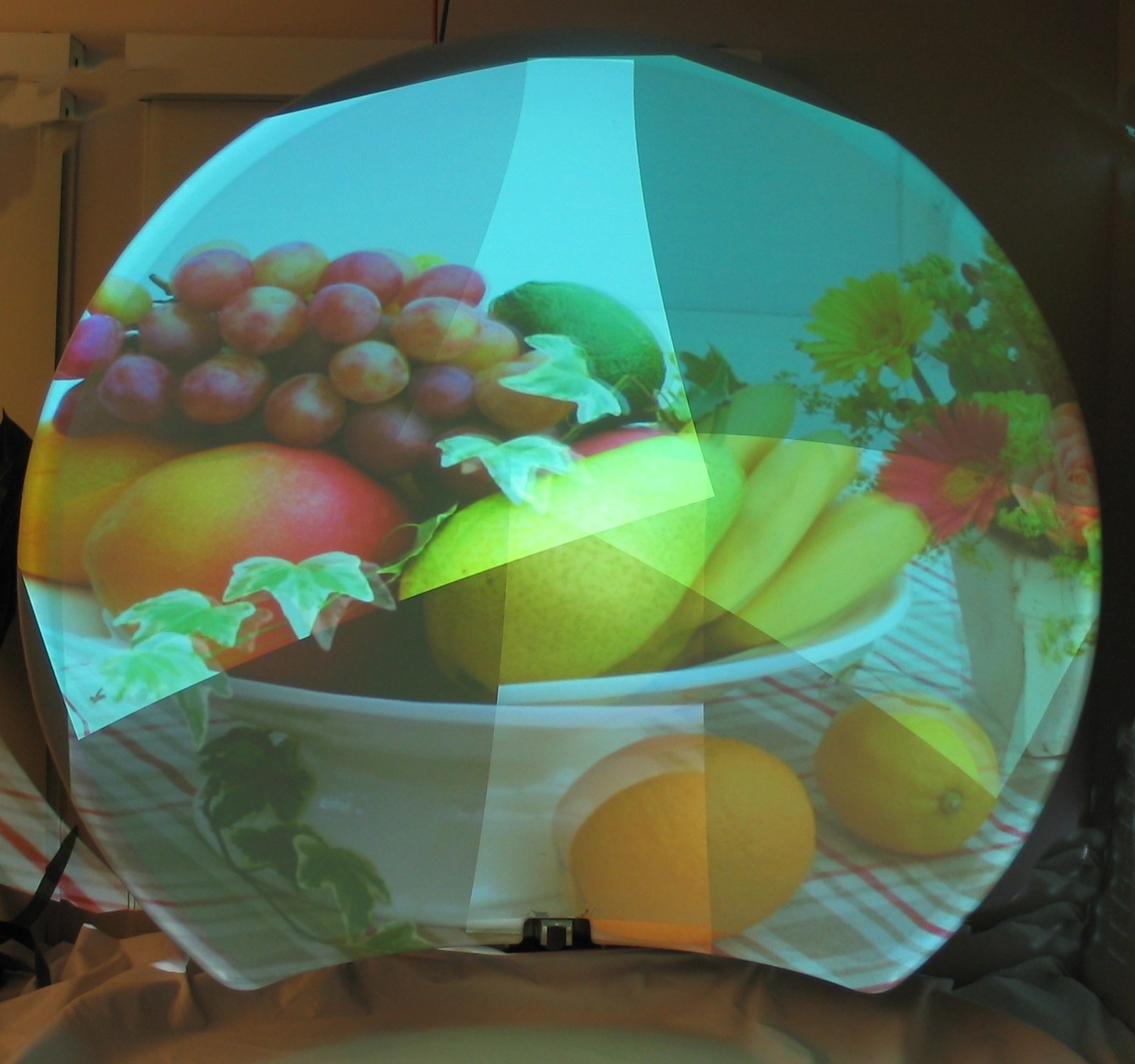  |
iLamp refers to intelligent Locale-Aware Mobile Projector
PDF Copy (1MB)
Link
to Video
Related SIGGRAPH
2004 paper, RFIG Lamps, on using handheld projectors with wireless
tags (like RFID)
Projector links [Link]
Projector mailing list [Link]
Mitsubishi Projectors [Link]